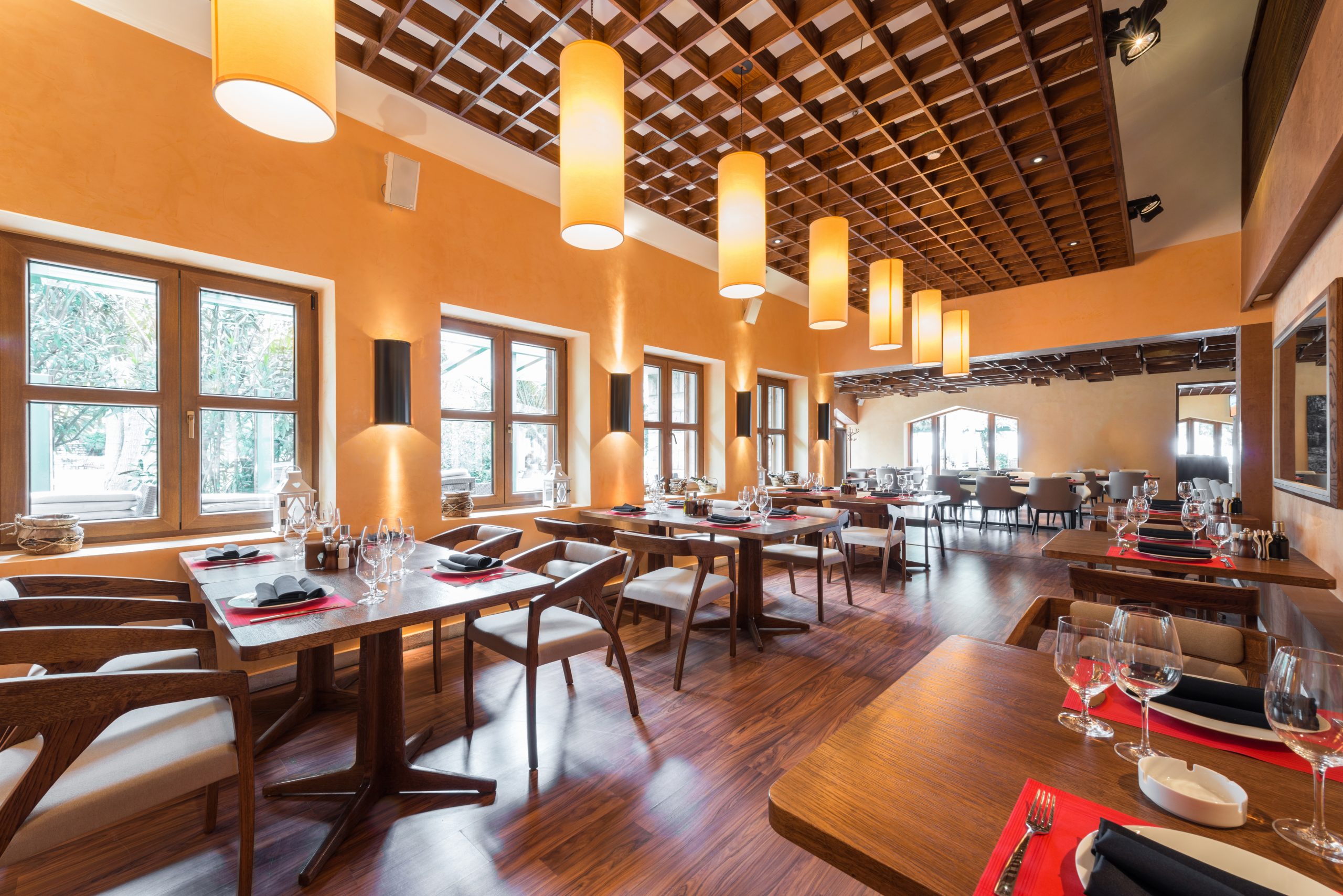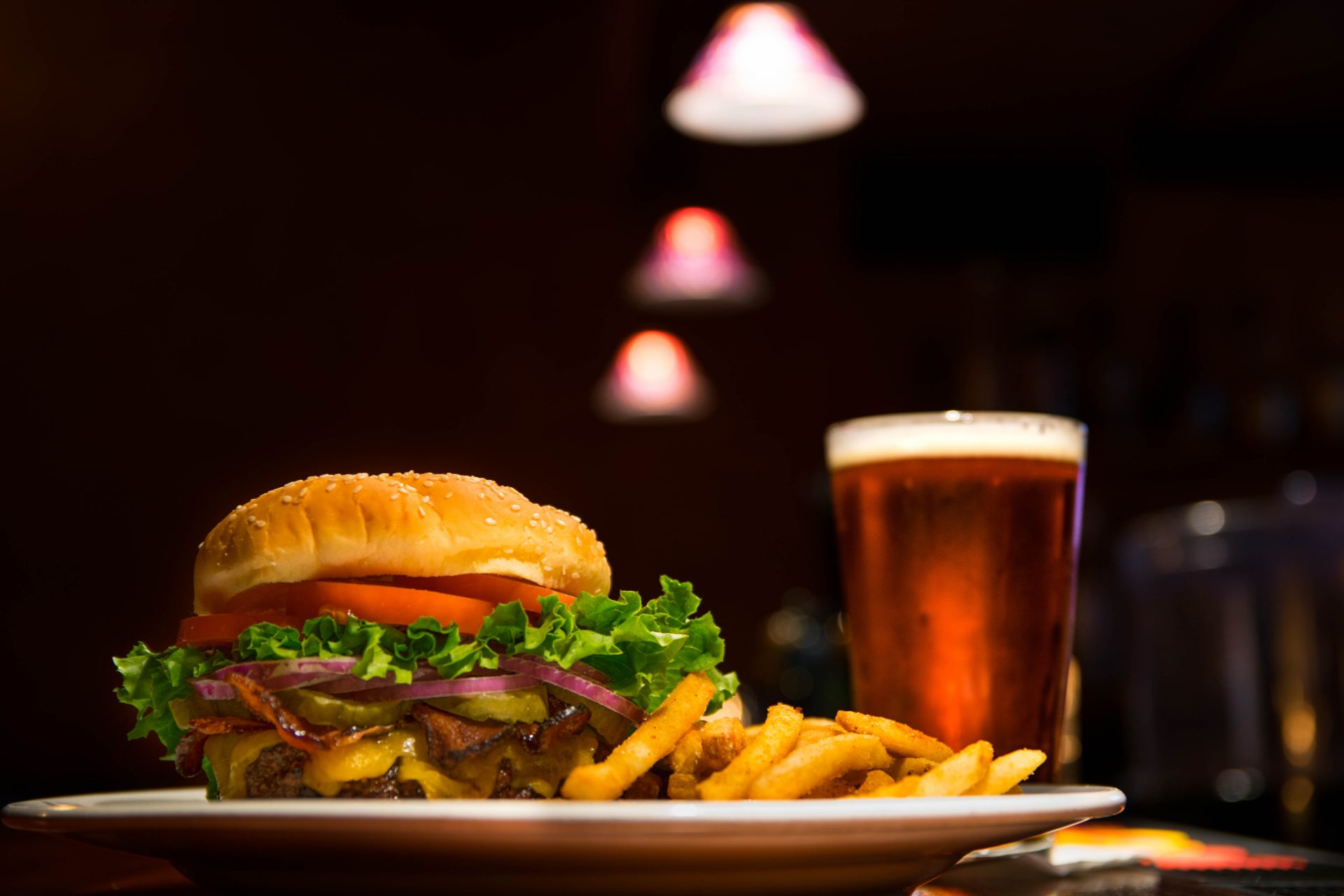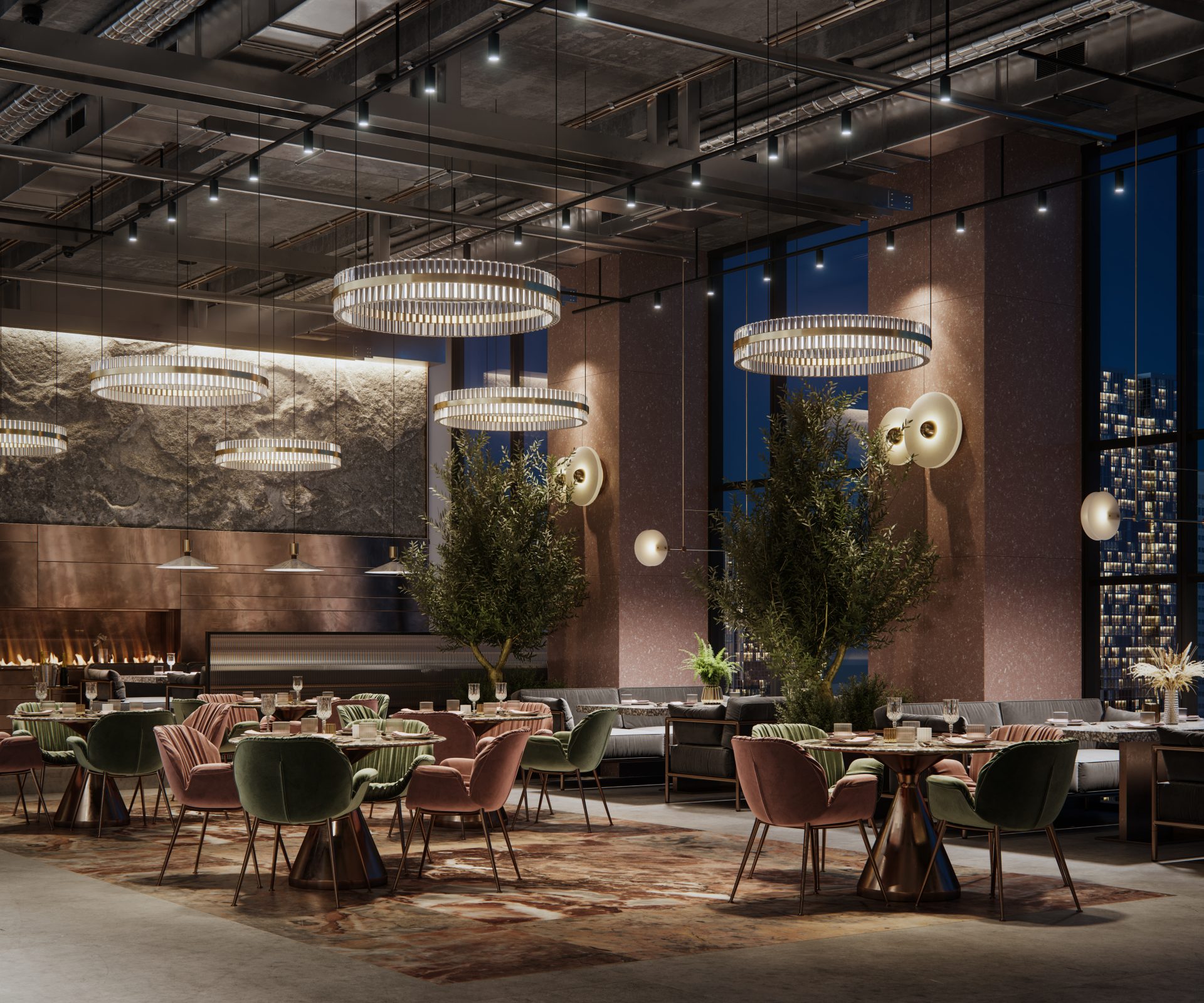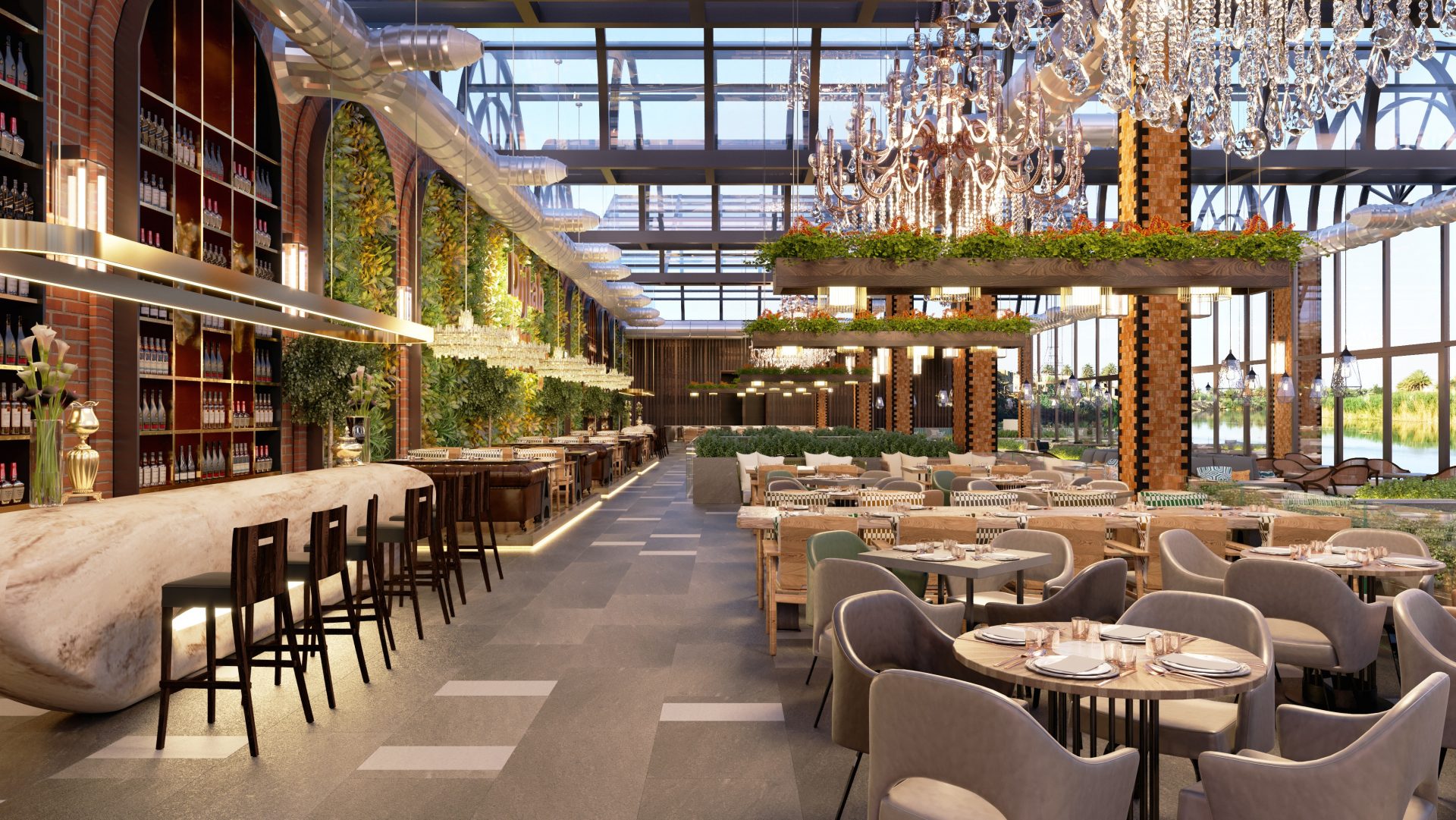
The importance of restaurant lighting
The importance of lighting is often underestimated or even forgotten when designing restaurants. Like many other design factors and elements, lighting has many benefits and can be as essential as food and service in a restaurant. Not only does a great restaurant lighting help create an atmosphere and represent the restaurant and its image, but it also influences guest behavior. This can lead to increased sales and productivity, as well as create differentiation of the space and ensure safety for all.
Psychology and lighting in restaurants
Lighting is intrinsically connected to psychology, as it influences not only the mood of individuals, but also their experience. Indeed, proper lighting not only brings positive emotions, but it truly creates an atmosphere.
The ambiance and atmosphere of a restaurant are all as important as the services offered there and allow customers to magnify their experience. A restaurant meal should appeal to several senses at once, which makes lighting a significant element, as it obviously, greatly aids the sense of sight. Lighting will whet guests’ appetites, making the food and drinks enticing.

A guest’s dwell time will also be greatly influenced by the lighting, which can be perceived as both relaxing and welcoming, or cold and inhospitable. So depending on the type of restaurant, the lighting will be very different. An upscale establishment will certainly lean towards warm lighting that will make the clientele comfortable, while a fast food restaurant will favor cooler lighting that will not invite them to stay for hours. Regardless of the type of food or service, it is undeniable that lighting has an influence on the behavior of a restaurant’s clientele. In fast food, for example, brighter light will tend to encourage people to eat more than they should.
On the contrary, in an upscale restaurant, lighting creates a relaxed and comfortable atmosphere, which makes customers want to stay longer and increases the chances that they will add items to their bill. Additionally, with lighting, restaurants help guests see a more attractive and charming version of themselves. With appropriately dispersed lighting elements and subtle lighting, restaurants make people feel more attractive. Lighting from candles on the table also seems to enhance people’s physical characteristics.

The benefits of good lighting in a restaurant
As mentioned earlier, restaurant lighting, like other types of businesses for that matter, can create an increase in sales. In fact, the better the ambiance achieved with lighting, the more guests will want to stay. They will want to enjoy the evening and the meal longer, which is likely to result in additions to their order, such as an extra glass of wine, dessert or more.
Lighting also plays a very important role, helping to make the food and drinks more appetizing, and therefore more tempting. To accentuate this effect, lighting must be strategically placed. The lighting must be thought according to two aspects: quantitative and qualitative. The quantitative aspect will allow for sufficient lighting to allow for good vision, while the qualitative aspect will highlight the food, beverages, decor and more. This explains, among other things, why the bar section is often put forward with more light or why the tables each have their own individual lighting.

Sales are not the only thing that proper lighting can increase in a restaurant. It also increases productivity in the kitchen. Good lighting, strong and uniform without being blinding and without causing a disturbance to the dining room, can pay off in a big way. Preparing high quality food with poor and inadequate lighting can be a real headache. Lighting is indeed very important in the kitchen, both for the safety of employees and for the optimization of processes and preparation. Moreover, lighting in the kitchen must meet several conditions for maximum safety. In fact, the lighting fixtures must normally be impervious to steam, smoke, dust and splashes. They should even be waterproof and resistant to shocks and breakage, as lighting regulations in the hotel and restaurant industry stipulate that no broken glass should come into contact with food and employees.

In the different areas of the restaurant, lighting also creates a real differentiation of the space. It is certain that the lighting must always keep a utilitarian aspect, in order to allow the different activities to take place well. Restaurants inevitably have several areas, such as the reception, the dining room, the bar, the kitchen, etc. All of these areas must have lighting. All these areas must have their respective lighting and the needs of each area are completely different, depending on the activities that are practiced and the atmosphere that is desired. The reception area should be sufficiently lit, to allow guests to consult the menu if they wish, as well as to see their hosts and more, but not too much either, to remain pleasant. Tables further away in the dining room can afford to be less lit, to create a more relaxed and intimate atmosphere, for example.
Many food service establishments also have fairly small areas, but differentiating areas with lighting can help to significantly expand the area, visually. Finally, lighting helps to ensure the safety and security of employees and guests, which is absolutely paramount. Lighting will help direct people to safe exits in the event of an emergency, as well as help prevent accidents and injuries to staff, both in the kitchen and on the floor.
LUX Lighting Solutions have the expertise and the products to optimise the lighting of your restaurants. Contact us to get started!

